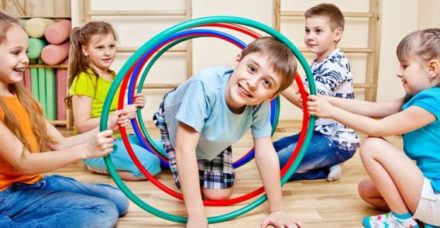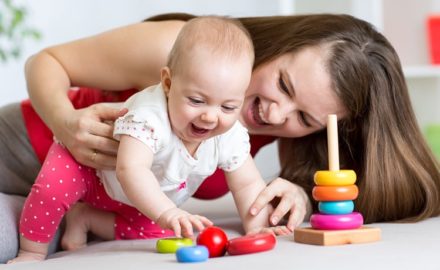Connecting to Literacy through ABC & 123
By: Elizabeth Wotherspoon
This may come as a bit of a surprise because some people are so obviously good at math, while others are better at reading and/or writing BUT both literacy AND math skills are rooted in language!
As parents and teachers, we want to do whatever we can to ensure our children are going to be successful in school, and ultimately in life. So, what do we do? We teach our children the alphabet, counting, and to recognize letters and numbers. And while these skills are an important step to achieving literacy, children’s language skills are actually more predictive of their reading and math skills!
What to do
The first step in achieving literacy is building your child’s spoken vocabulary. The more words they understand and use, the better their reading and math outcome!
Here’s what to do at each age to build up vocabulary:
- For your 1-year-old: it is important to expose your child to lots and lots of spoken words. Talk to him/her about what you’re doing when you’re doing it. Narrating your actions is an easy way to expose your little one to a TON of words!
- For your 2-year-old: it’s important to use a variety of words for this age group and to include some sophisticated words.
- For your 3-year old: when your child was one and two the amount and variety of words they were exposed to was important, now that he/she is three, the quality of the interaction becomes more important. Have conversations and tell stories. Talk about what you did today or what you might do tomorrow.
Once a child has started using words to request, comment, greet, and negate they have achieved the first step to becoming literate.
Next, we need to delve a little deeper to form those fundamental skills required for literacy. Here are some guidelines for helping your child acquire those skills:
- Talk about what your child likes
- Repeat, repeat, repeat – children need to hear new words MULTIPLE times before they begin to use them
- Aim for a balanced conversation – we want your child to hear new words AND to have time to think about what was said and how to respond
- Point out objects and concepts in the world around you (e.g., “sticky, this glue is sticky.”)
- Help your child understand the meaning of new words by using actions, gestures, and facial expressions in addition to words
- Tell stories together with your child – these can be about real or made-up events. Simply talking about what you did today or what you might do tomorrow builds pre-literacy skills
- Focus on the SOUNDS of language rather than the letters. For example, “Sam starts with a snake sound: sss.” Become detectives and find all the snake sounds on a page in a book!
- Enjoy shared book reading with your child – this promotes early literacy socialization and teaches children that reading can be fun and interactive
How is math connected to literacy and language?
I have spent a lot of time talking about how to build vocabulary as a fundamental skill for reading, but when does math come into the picture?
Early mathematics is more than recognizing and reciting numbers, children need to understand concepts and relationships. Research shows that mathematical LANGUAGE is one of the strongest predictors of success in math.
Some Tips and Tricks to Integrate Mathematical Language into Your Day
Introducing concepts and relationships to your child early will be so important for his/her academic success and it’s not even difficult to do!
- Use numbers to describe or count in daily conversations rather than focusing on number recognition
- Make comments using numbers (e.g., “You have two cookies! I only have one. You have MORE cookies than I do!”)
Mathematical language includes comparison and spatial concept words, rather than numbers. Here’s an example of some of the words I’m talking about:
- Comparison words: more, less, some, most, fewer, a lot, a little bit
- Spatial concepts: near, far, before, after, front, first, above, below, end
Use words like these at any time with your child – including while reading stories. Make comments and ask questions using this language (e.g., “How do you know the duck has the most seeds?” or “The plane is above the helicopter.”)
Challenge Accepted
I bet you’re thinking to yourself that you already do these things. This posts challenge is to really pay attention to comparison words and spatial concepts you’re using when interacting with your child. After you’ve done this, come up with some activities you think it would be easy to integrate mathematical language into and how that might look.
As an example, I might bring a pie plate, some coloured felt, and fake fruit and “bake a pie” as an activity that promotes learning new vocabulary while using mathematical language.
- First we make the crust (put the coloured felt on the bottom of the pie plate)
- After the crust is made, we add the fruit
- We need a lot of fruit to fill the pie
- Let’s add more fruit – we just need a little bit more
- Oh, no we have too much – we need less fruit
- After we’ve got the right amount of fruit, we add the crust
- Put it on top of the fruit
- Last, we bake the pie for 30 minutes at 350 degrees
Connecting With Play
Have you ever wondered why learning language seems so easy for some kids and so hard for others?
Read More



